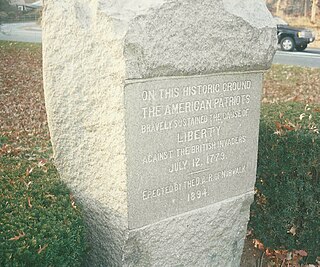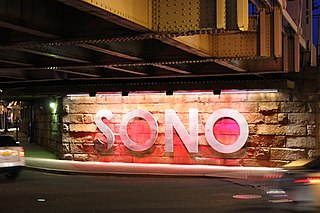| James Richards | |
|---|---|
| Member of the Connecticut House of Representatives from Norwalk | |
| In office October 1779 –May 1780 [1] Servingwith Clapp Raymond | |
| Preceded by | Clapp Raymond, Stephen St. John |
| Succeeded by | Stephen St. John, Samuel Cook Silliman |
| In office October 1782 –May 1780 [1] Servingwith Stephen St. John | |
| Preceded by | Stephen St. John, Samuel Cook Silliman |
| Succeeded by | Samuel Cook Silliman Stephen St. John |
| Personal details | |
| Born | October 29, 1723 Norwalk, Connecticut |
| Died | May 17, 1810 (aged 86) [2] New Canaan, Connecticut |
| Resting place | Canoe Hill Cemetery, New Canaan, Connecticut [2] |
| Spouse(s) | Hannah Warren, Ruth Hanford, Hannah Close |
| Residence | Norwalk, Connecticut |
| Occupation | clerk |
| Military service | |
| Rank | Captain |
| Unit | Connecticut Militia |
| Battles/wars | American Revolutionary War • Battle of Norwalk • Invasion of Danbury |
James Richards (October 29, 1723 – May 17, 1810) was a member of the Connecticut House of Representatives from Norwalk in the sessions of October 1779, and October 1782. He served as a captain in the Connecticut Militia during the American Revolutionary War.

The Connecticut House of Representatives is the lower house in the Connecticut General Assembly, the state legislature of the US state of Connecticut. The house is composed of 151 members representing an equal number of districts, with each constituency containing nearly 22,600 residents. Representatives are elected to two-year terms with no term limits. The House convenes within the Connecticut State Capitol in Hartford.

Norwalk is a U.S. city located in southwestern Connecticut, in southern Fairfield County, on the northern shore of Long Island Sound. Norwalk lies within both the New York metropolitan area as well as the Bridgeport metropolitan area.

The American Revolutionary War (1775–1783), also known as the American War of Independence, was an 18th-century war between Great Britain and its Thirteen Colonies which declared independence as the United States of America.
He was the son of Samuel Richards and Elizabeth Latham.
He began life as a clerk, becoming afterward a soldier and sailor. He was present, in arms, at the Battle of Norwalk, and the Invasion of Danbury.

The Battle of Norwalk was a series of skirmishes between the Thirteen Colonies and Great Britain during the American Revolutionary War. The attack was one part of a series of raids on coastal Connecticut towns collectively known as Tryon's raid. The battle was fought in Norwalk, Connecticut on July 12, 1779. 70th (Surrey) Regiment of Foot of Great Britain commanded by Major General William Tryon arrived on July 10, 1779. They marched in a two pronged attack on both sides of the Norwalk River. They followed a path along what is today East and West Avenues burning everything along the way. Only six houses within the business district at Head of River were spared.

The Battle of Ridgefield was a battle and a series of skirmishes between American and British forces during the American Revolutionary War. The main battle was fought in the village of Ridgefield, Connecticut, on April 27, 1777. More skirmishing occurred the next day between Ridgefield and the coastline near Westport, Connecticut.
Richards' wife Ruth Hanford, was a daughter of Samuel Hanford, a granddaughter of Eleazer Hanford, and a great-granddaughter of Rev. Thomas Hanford, of Norwalk. Ruth Hanford's mother was a daughter of Moses Comstock.
Moses Comstock was a member of the Connecticut House of Representatives from Norwalk in 1777.


